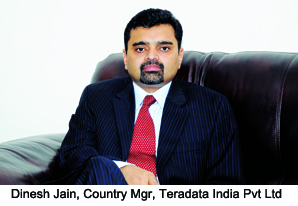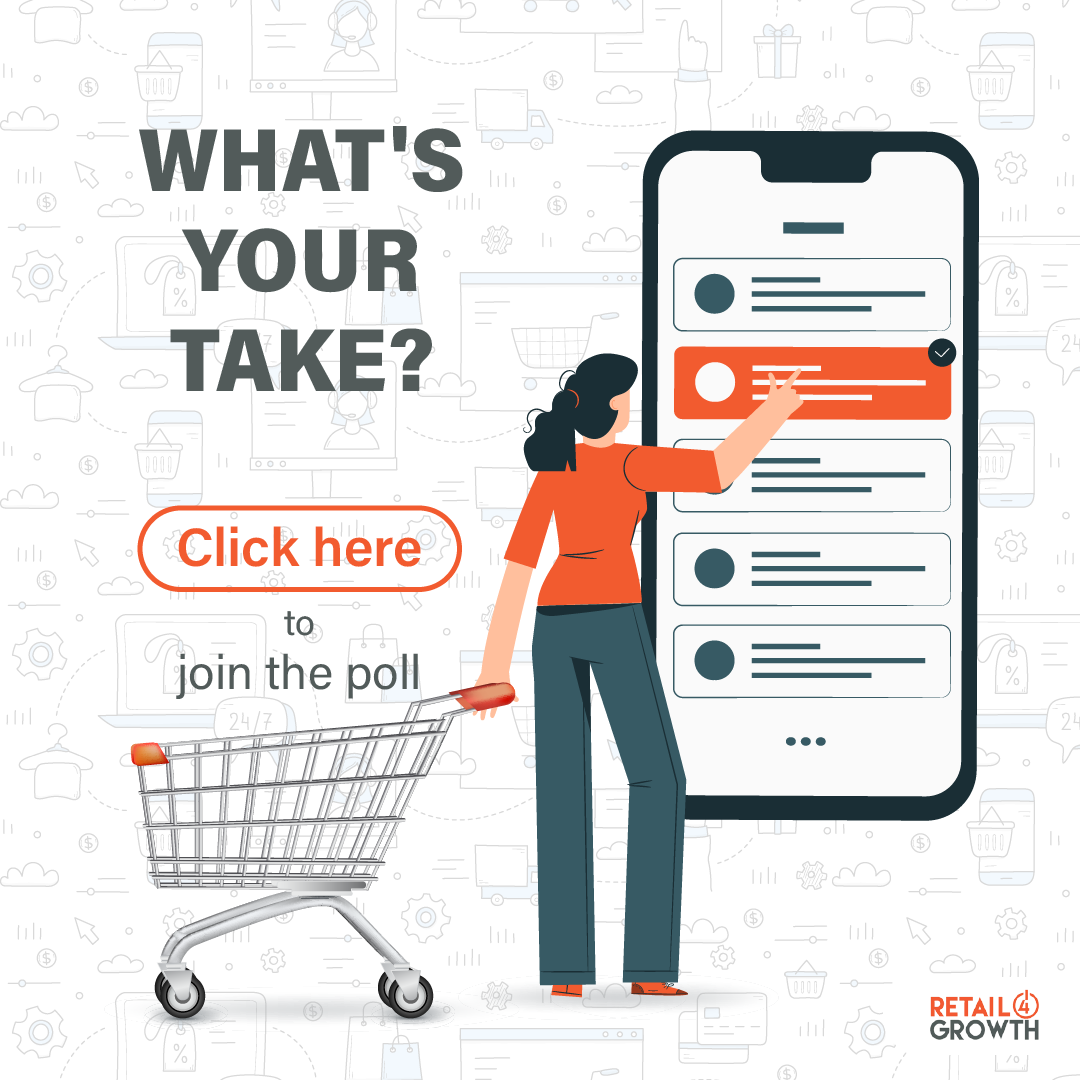Dynamics of Data Mining
By Fairy Dharawat | October 22, 2013
Simply put, Data Mining is the process of analyzing data and arriving at discernible patterns. For a brand or retailer, data mining helps in understanding customer behaviour and accordingly take business decisions. Point-of-Purchase takes a close look at how data mining is helping the brands and the retailers to shape up their business strategy in a more structured manner by giving a better understanding of their market.
Data mining or'knowledge discovery' is the process of finding meaningful insights from data or information collected through multiple or single source. Data is useless until there is a mechanism to find the usable inputs that can help in decision making. Thus it is the systematic process of discovering usable patterns and actionable trends from large chunks of immeasurable data elements. These large data sets are routinely captured by enterprises under different business processes to analyze information from different dimensions or angles, categorize it, and summarize the relationships identified. Technically, data mining is the process of finding correlations or patterns among dozens of fields in large relational databases.
Brands and their data mining strategy
 For Emami Limited, a common name in the Personal Care sector, employing data mining to get hold of consumer insight is an ongoing activity. N. Krishna Mohan, CEO- Sales, Supply Chain and Human Capital, Emami Limited informs, "We have regular syndicated researches and also subscribe to various available data to improve our understanding of the consumers and their feedback. We use the research findings to gather feedback on product delivery, packaging, communication, our relative market shares, competition information, level of consumer engagement with the brand, new category evaluation, corporate\brand strategy and new product testing.†The brand has a consumer research wing within the company and also engages different research organizations for gathering consumer insights depending on the need.
For Emami Limited, a common name in the Personal Care sector, employing data mining to get hold of consumer insight is an ongoing activity. N. Krishna Mohan, CEO- Sales, Supply Chain and Human Capital, Emami Limited informs, "We have regular syndicated researches and also subscribe to various available data to improve our understanding of the consumers and their feedback. We use the research findings to gather feedback on product delivery, packaging, communication, our relative market shares, competition information, level of consumer engagement with the brand, new category evaluation, corporate\brand strategy and new product testing.†The brand has a consumer research wing within the company and also engages different research organizations for gathering consumer insights depending on the need.  Dinesh Jain, Country Manager, Teradata India Pvt Ltd, in this regard shares some interesting examples from diverse sectors where different brands used data mining to analyse consumer behaviour:
Dinesh Jain, Country Manager, Teradata India Pvt Ltd, in this regard shares some interesting examples from diverse sectors where different brands used data mining to analyse consumer behaviour: FMCG: A leading soap brand used RFID tags embedded in their products to analyze the main areas in a city where their products were selling more and also identified the households which are their regular customers. Using this data and the understanding of consumer behavior, they were able to generate a campaign focused on these geographical areas using road shows and celebrity visits to create the wow factor for customers.
Lifestyle: A leading fashion label uses analytics to understand which product pairs are most attractive to most customers and then they changed their store layouts based on what sells more if displayed "togetherâ€.
Personal care: A leading hair oil brand found out that their sales were higher in certain geographies because customers had found a parallel usage for the product in a different area. The company quickly understood this and created targeted products to mop up the market.
Improved visibility
For any industry consumer insights often lead to increased visibility at the retail shelf. "Some findings helped us devise P-O-P materials which are unique, cost effective yet impactful. We have also observed many situations wherein shoppers\retail store executives come up with suggestion on packaging, where our brands should be kept on store shelf etc. We value every feedback of the consumers to improve their experience with our brand,†says N. Krishna Mohan from Emami.
- Prominent brands using Data Mining
Market Trend of Data Mining in India
 Data mining in India as an industry is still in its nascent stage of adoption among Indian brands. Here it is still mainly dominated by the retail sector followed by Telecom and Aviation. Vaibhav Khamesra, Head - Marketing, Capillary Technologies, shares in this regard, "Most brands in India are looking aggressively to utilize the information that they collect on customers or the digital and offline footprints that customers leave for them. They are trying to employ analytical services to discover crude trends around customer behaviour but they are no match for the complex and capricious Indian customer. Typically data mining on operational and transactional data sets is consumed by business leaders to optimize consumer engagement, product development, sales streamline and bottom-line optimization. The best source for retailers and other consumer facing brands for this intelligence is turning POS (point-of-sale) transaction data into measurements of customer behaviour.â€
Data mining in India as an industry is still in its nascent stage of adoption among Indian brands. Here it is still mainly dominated by the retail sector followed by Telecom and Aviation. Vaibhav Khamesra, Head - Marketing, Capillary Technologies, shares in this regard, "Most brands in India are looking aggressively to utilize the information that they collect on customers or the digital and offline footprints that customers leave for them. They are trying to employ analytical services to discover crude trends around customer behaviour but they are no match for the complex and capricious Indian customer. Typically data mining on operational and transactional data sets is consumed by business leaders to optimize consumer engagement, product development, sales streamline and bottom-line optimization. The best source for retailers and other consumer facing brands for this intelligence is turning POS (point-of-sale) transaction data into measurements of customer behaviour.†Bhupendra from Simplify 360, while sharing on their partnership arrangement they have with their client, says, "The understanding we have is - the brands want to get best of the exercise and remain at the top of their industry, and we work to build the next generation case study. The partnership arrangement is to complement each other. The type of analysis we are involved is in understanding the consumer behavior by:
a) finding trends of product adoption
b) finding brand perception by demography
c) and identifying emerging industry trends
The exercise is rigorous and we do provide them reports on daily, weekly and monthly basis. The strategy review is done every quarter.â€
What do retailers look for?
Today modern retailers reach out to data mining for intelligence around their business before major investments in areas like a leading marketing campaign, festive sales, EOSS periods, new product launches or major business transformations. Says Vaibhav Khamesra informs, "We usually work with our customers round the year powering their business in the above periods and also help them face slow months like Pre-EOSS periods or for managing slow moving inventories or power lump business hours.†Thus it is not an option any more, but absolutely mandatory for retailers to look at their data holistically to differentiate, grow and optimize.
Bhupendra from Simplify 360 says in this context, " Now a days retailers are using more than just traditional data to understanding sales trends and uncover hidden relationships between seemingly disjoint products. By combining traditional transaction data and customer traffic, clickstream (for online retailers) and POS data it is possible to understand which departments or product groups in a large retail outlet have relationships or propensities for each other.
 Says Amit Sarda, MD, SoulFlower, a retail brand, "We do partner with our retail partners, think tanks like Nishad Ramchandran of Hansa Cequity. We have always believed in partnerships and we do data mining across categories and platforms. In a recent activity at our Inorbit store we saw a incremental footfall of 21% over last month just by communicating solutions to the consumers based on their buying pattern. A similar activity done on www.soulflower.biz increased our traffic and resulted in 100% growth in the month of Feb over Jan. In E com, the nature of the retail platform gives you flexibility of targeting a specific customer for specific need based on AI. Another retail activity recently conducted at ShoppersStop based on customer data saw a 37% increase over average monthly consumption in Soulflower soap quantities.â€
Says Amit Sarda, MD, SoulFlower, a retail brand, "We do partner with our retail partners, think tanks like Nishad Ramchandran of Hansa Cequity. We have always believed in partnerships and we do data mining across categories and platforms. In a recent activity at our Inorbit store we saw a incremental footfall of 21% over last month just by communicating solutions to the consumers based on their buying pattern. A similar activity done on www.soulflower.biz increased our traffic and resulted in 100% growth in the month of Feb over Jan. In E com, the nature of the retail platform gives you flexibility of targeting a specific customer for specific need based on AI. Another retail activity recently conducted at ShoppersStop based on customer data saw a 37% increase over average monthly consumption in Soulflower soap quantities.â€Challenges and Limitations
"Data mining in India happens but the scope is still stagnant in terms of supporting the mining for operational KPI reporting and superficial analytics which are not very insightful. This is due to the fact that most of the mining activities still reside in the domain of technology services or in an intersection of business and technology. Hence the focus is more on projects and reporting "what†has happened. The challenge is to move this function to business where they would then use it to find out "why it happened†and "what may happenâ€, and as a result use data mining and analytics as a key business enabler and growth engine,†informs Dinesh Jain from Teradata India Pvt. Ltd.
It has been observed that brands often find it difficult in analyzing data when it comes to the right selection of data mining agency or the tools available in the market., "It happens mainly because of poor understanding between the agencies and the client on the specific requirement. However by close coordination between the marketing teams, internal research team and the agencies, today we have complete involvement and engagement of all stake holders in the process. The research agencies themselves have realized the importance of the different analytical tools to be used and have geared up substantially to help the client to get meaningful insights. We would invest in consumer research as we realize that it helps us to vindicate or correct many hypothesis that we have in our mind. It is essential to update consumer understanding and behaviors regularly. The cost of putting the idea, concept or a product in the market and then realizing that we were incorrect is much higher than the cost of research,†opines N. Krishna Mohan.
"With the mobile and social revolution in the last decade, we have seen enormous amount of data that is being created on a daily basis. This data is of huge importance, and if any company can master it, they are going to win their business rightly. This has increased the significance of data mining, and data mining is now real time facilitated by big data systems that can handle huge data volume,†signs off Bhupinder.
As shopper marketing gains ground, data mining could soon become an indispensible part of any brand/retailer's business strategy.
Advertisement
Related Viewpoints
Advertisement


_165_265.jpg)
_165_265.jpg)





Comments